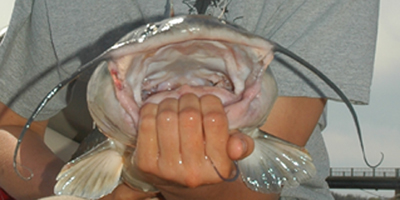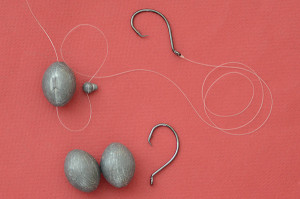Channel Catfish (Ictalurus punctatus)
Our first fishing trip of the year is usually in April fishing for channel catfish at the mouth of the Grand River, the largest watershed in southern Ontario. Generally muddy, turbid and cold water is present, but so are a good number of channel catfish. Sizes range from a few pounds to mid-twenty pounders.
 Probably the most important thing to know about Catfish is that they are equipped with taste buds across the surface of their body, inside their mouth, pharynx and in high concentrations on their barbells (whiskers) and gill arches. This is their primary means of finding food, although in clear water eyesight can be important as well. Channel catfish also have smell organs (olfactory organs) in the nostrils, but their role in locating food is less understood (1).
Probably the most important thing to know about Catfish is that they are equipped with taste buds across the surface of their body, inside their mouth, pharynx and in high concentrations on their barbells (whiskers) and gill arches. This is their primary means of finding food, although in clear water eyesight can be important as well. Channel catfish also have smell organs (olfactory organs) in the nostrils, but their role in locating food is less understood (1).
In the turbid waters generally found in the spring in the Grand River one of the most common means for catching catfish is with a variety of baits on a circle hook and large slip sinker. Use a small split shot or swivel 12-18 inches above the hook as a stop for the slip sinker. A swivel is better in current as it will lessen line twist. Remember that with a circle hook you must not set the hook but must let the fish do the work of setting it.
Common baits for this trip have included:
- Worms
- Minnows (alive and dead)
- Cut baits from a variety of fish
- Chicken livers
- Large raw shrimp (these worked particularly well last season)
** Update – this year cut bait worked the best, with very little success with shrimp or chicken livers. Just shows you that you need to be prepared to try different things.**
Channel catfish prefer bottoms of sand, gravel and rubble over that of mud and they are generally not found in thicker weeds. Adults tend to prefer deeper holes with cover of rocks or logs and will feed in deeper areas downstream from sand bars. Feeding can occur all day but may be concentrated at night just before dawn and after dusk.
Reference:
1) T. L. Wellborn, SRAC Publication No. 180 (1988).



